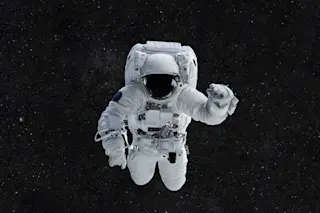One day, it's bound to happen. An astronaut dies in space. Maybe the death occurred en route to Mars. Maybe she was interstellar, on board a solo spacecraft. Or maybe the body was thrust out an airlock, a burial at space.
That corpse (or the corpse's spacecraft) could spend anywhere from decades to millions of years adrift. It would coast listlessly in the void, until the creeping tendrils of gravity eventually pulled it into a final touchdown. Likely this corpse will burn up in a star.
But lets say it lands on a planet. Could our corpse, like a seed on the wind, bring life to a new world?
There are roughly two ways you could imagine a human corpse seeding life across the cosmos. Either by delivering living microbes, or — if all those viruses, bacteria, and other germs died in route — sparking the genesis of entirely new ...














